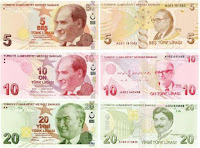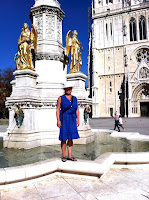With all the current extremist tensions going on in the Middle East, embassy attacks around the world, and Israel ramping up to protect themselves from Iran's nuclear "program", we knew security would be tight at Ben Gurion Tel Aviv Airport. So, we are happy to announce that we safely arrived in Jerusalem without any problems. In fact it was one of the fastest and smoothest customs, security, and immigration processes. Of course we landed at midnight and there weren't too many people arriving at that time so that probably helped. We were pleasantly surprised that there were no lengthy security checkpoints and "interrogations" by the immigration officers.

We were quickly out of the international arrival lobby and on our way to Jerusalem. We easily found the Nasher Taxi Shuttle service, right outside baggage claims. These 10-seater vans drop passengers off in front of their home or hotel, 24/7 for 62 shekels/pp. We got on the one going towards the Bak'a neighborhood of Jerusalem, gave them our address of the apartment rented through Airbnb, and we were on our way! It's a much better option than taking a taxi for 200-300 shekels. Although, we've been told that the shuttles sometimes deny taking passengers to the Muslim-based, East Jerusalem addresses. Knowing this, we made sure to find an apartment in West Jerusalem.
Jeff, our Airbnb host who is American living in Jerusalem, offered to let us in the apartment when we arrived in the middle of the night. Isn't that the best service, ever? Otherwise, we would've had to find a hotel at 2 am, then move to our apartment the next day.
The studio apartment is very cute, cozy, comfortable, and quiet. It has air-conditioning, a huge plus in this Middle Eastern heat. We've heard more American English being spoken by residents in this Bak'a neighborhood than we have anywhere else in our entire trip thus far. It almost feels like home, except that everything is written in Hebrew without a single English translation, so thank goodness people can communicate in English, because we sure can't read anything around here!
 |
| Door to our studio apartment on Shimshon Street in Bak'a neighborhood in West Jerusalem. |
 |
| Lovely private patio outside of our room. Also a great place for hanging our laundry in this Middle Eastern heat! |
 |
| A really nice bike and walking path near the apartment. |
 |
| Digging into a falafel sandwich! |
We anticipate an enjoyable stay in Jerusalem!
































